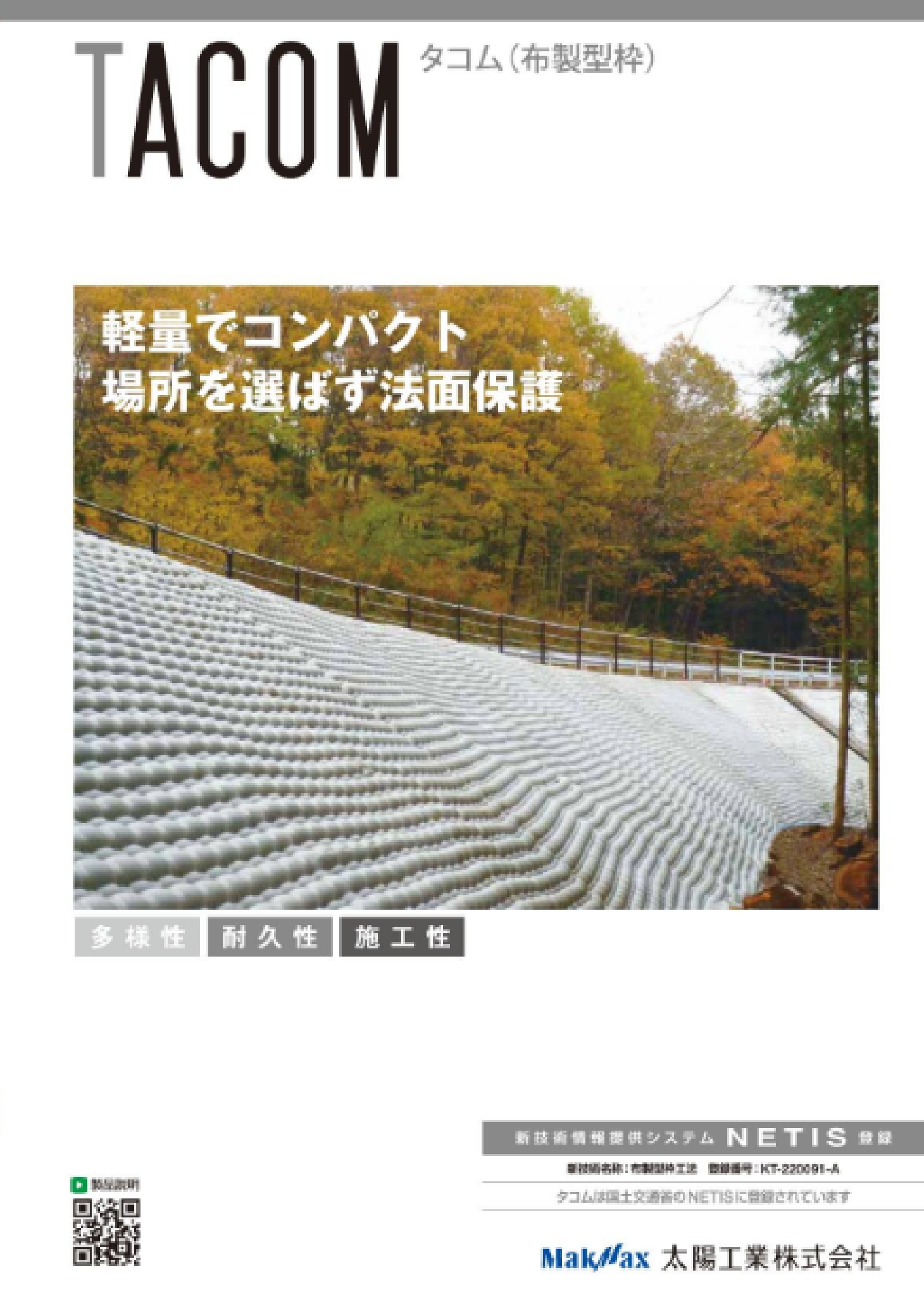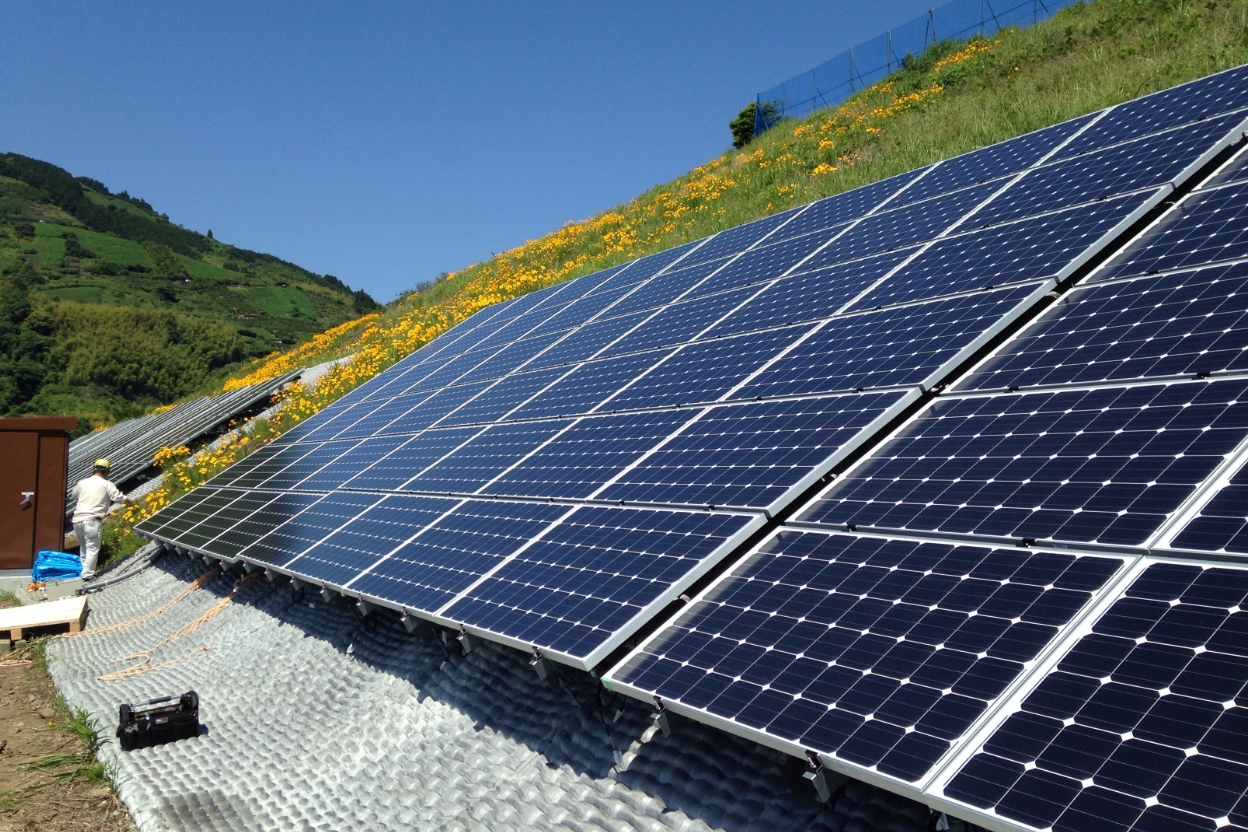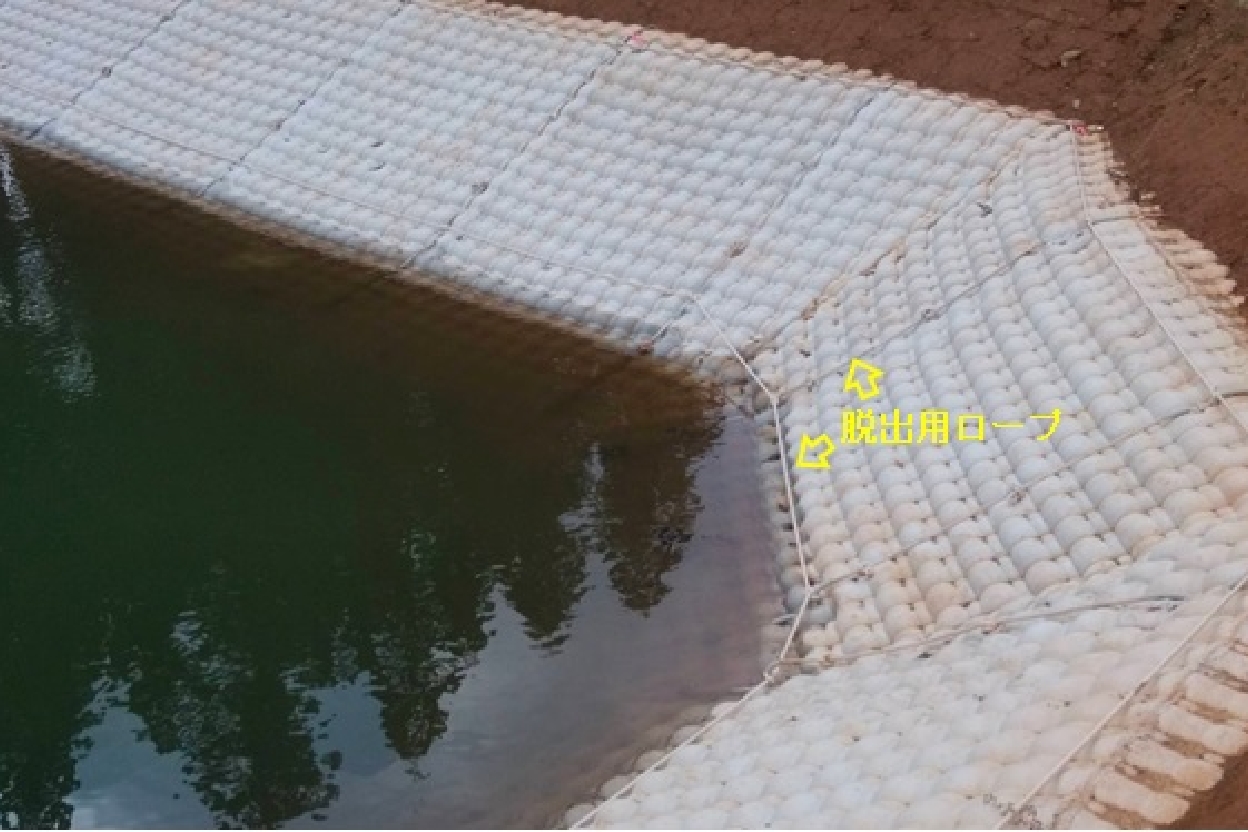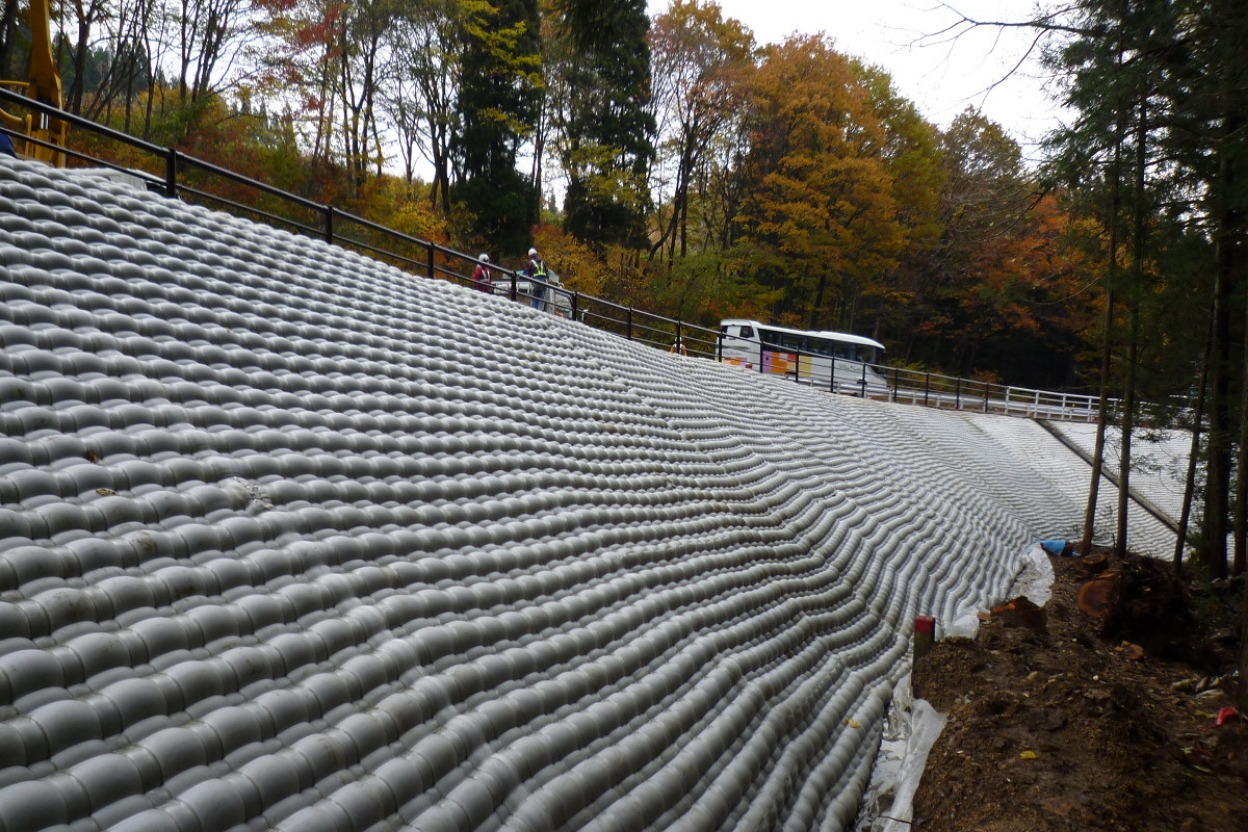
"TACOM"
-Fabric formwork-
Slope protectors can be quickly formed into any shape suitable for the site.
TACOM is a method of forming mortar (concrete) structures of a certain thickness by injecting mortar or concrete into a lightweight, high-strength double-woven fabric (fabric formwork) made of synthetic fibers.
Taking advantage of its characteristics, it is used in a wide range of applications, such as river and dam revetment slope protection, channel lining, bridge pier rooting, slope greening, and underwater (underwater) law lining.
New Technology Information System “NETIS Registration”: Cloth Formwork Method
Registration No. KT-220091-A
*For sale only in the Japanese market
Product & Service
Features
Diversity
Lightweight, compact, and flexible, it requires less space than conventional construction methods such as taut blocks.
It follows the ground and can be installed in any shape.
(The maximum applicable legal slope is about 1:1.0)
Workability
Injection can be performed by simply securing the perimeter of the mat.
Injection into factory-processed mats tailored to the site enables installation over a wide area by a small number of people in a short period of time.
No large heavy equipment is required, and the work can be performed underwater (subsea).
Standard type
- Forms a mortar (concrete) board over the entire surface of a certain thickness.
- It can be used for all kinds of applications such as rivers, waterways, regulating reservoirs, railroads, and roads.
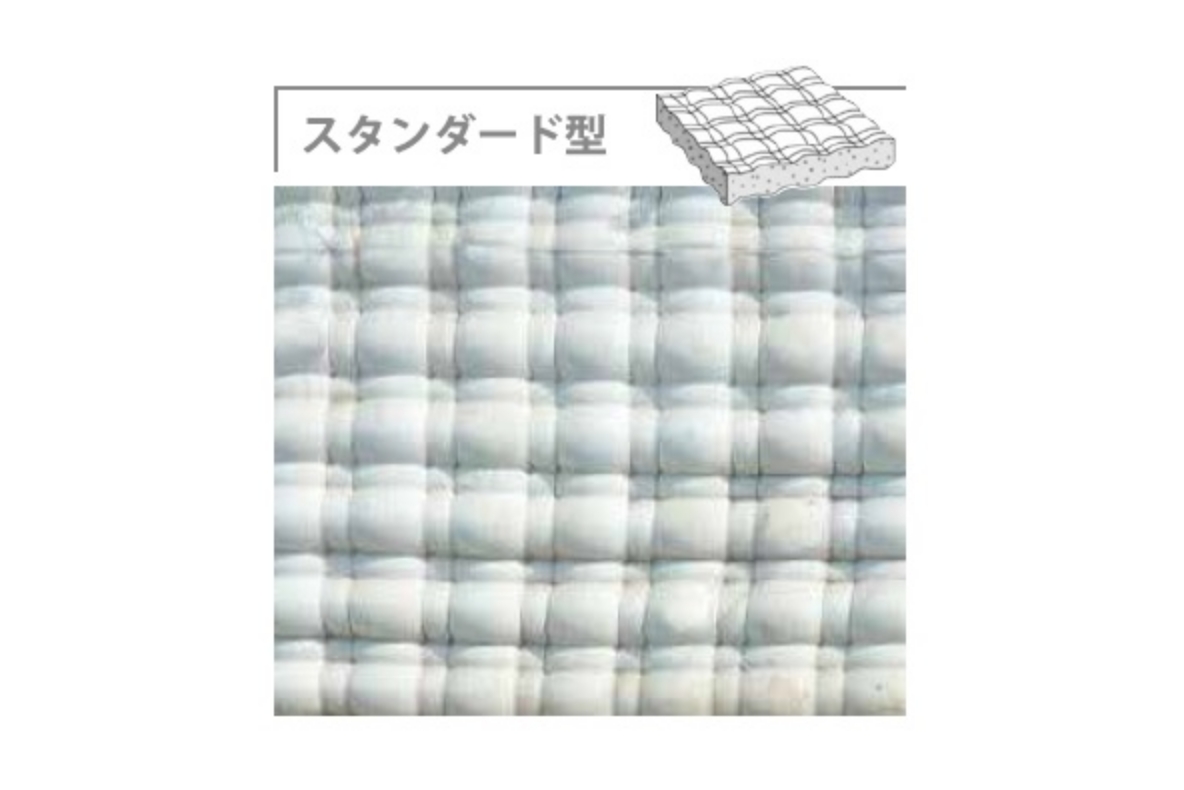
Filter type
- The filter section enables smooth drainage of spring water from the slope.
- It is suitable for slopes with spring water, regulating reservoirs with water level differences, and percolating regulating reservoir slopes.
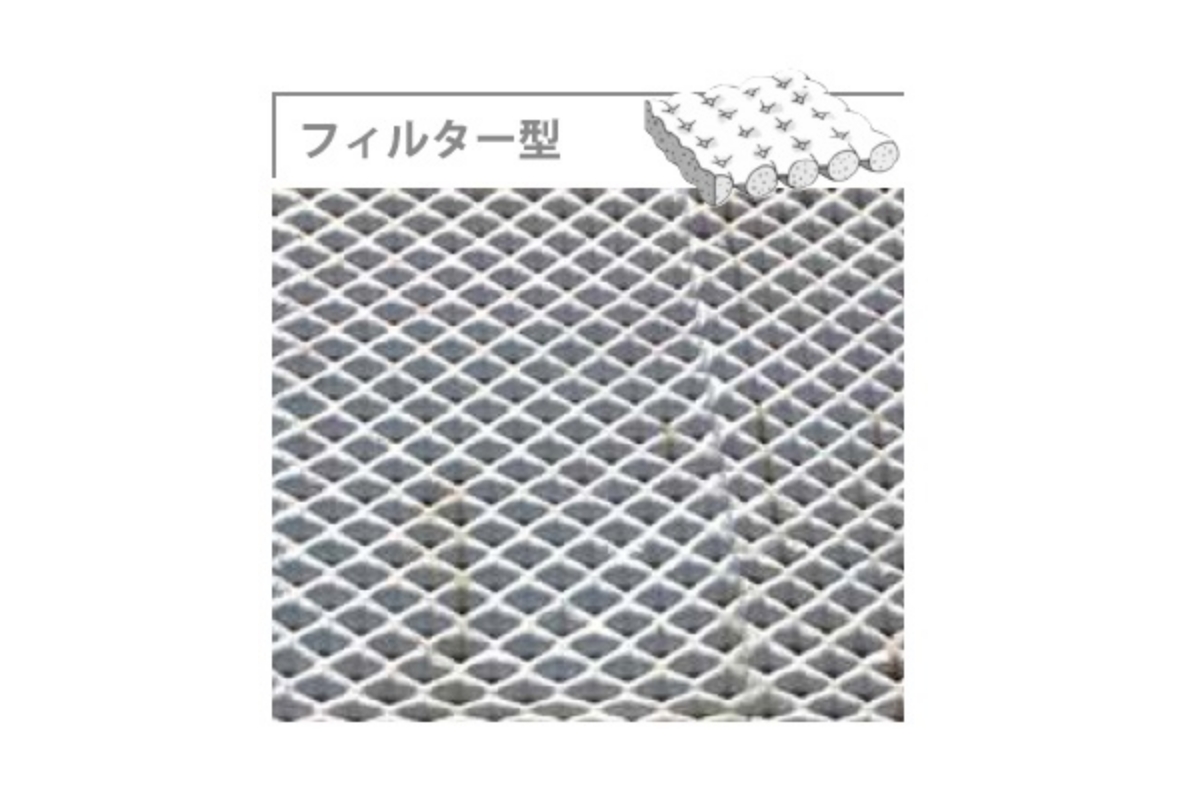
Mesh type
- Form a lattice-like mortar legal frame.
- Slope revegetation can be achieved by placing a layer of soil, sprayed seeds, or a vegetated soil container inside the frame.
- Suitable for road slopes, rivers, and upper slopes of regulating reservoirs where aesthetics and greening are required.
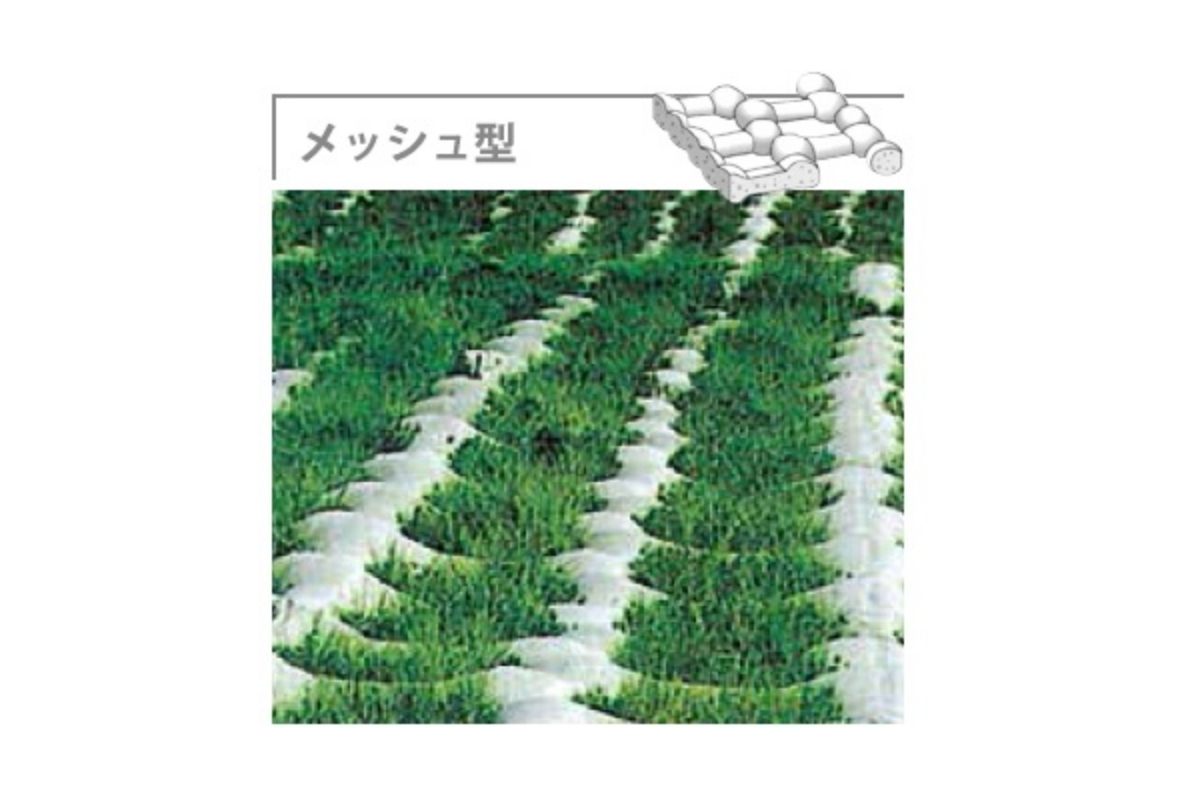
Durability
- Form a lattice-like mortar legal frame.
- Slope revegetation can be achieved by placing a layer of soil, sprayed seeds, or a vegetated soil container inside the frame.
- Suitable for road slopes, rivers, and upper slopes of regulating reservoirs where aesthetics and greening are required.
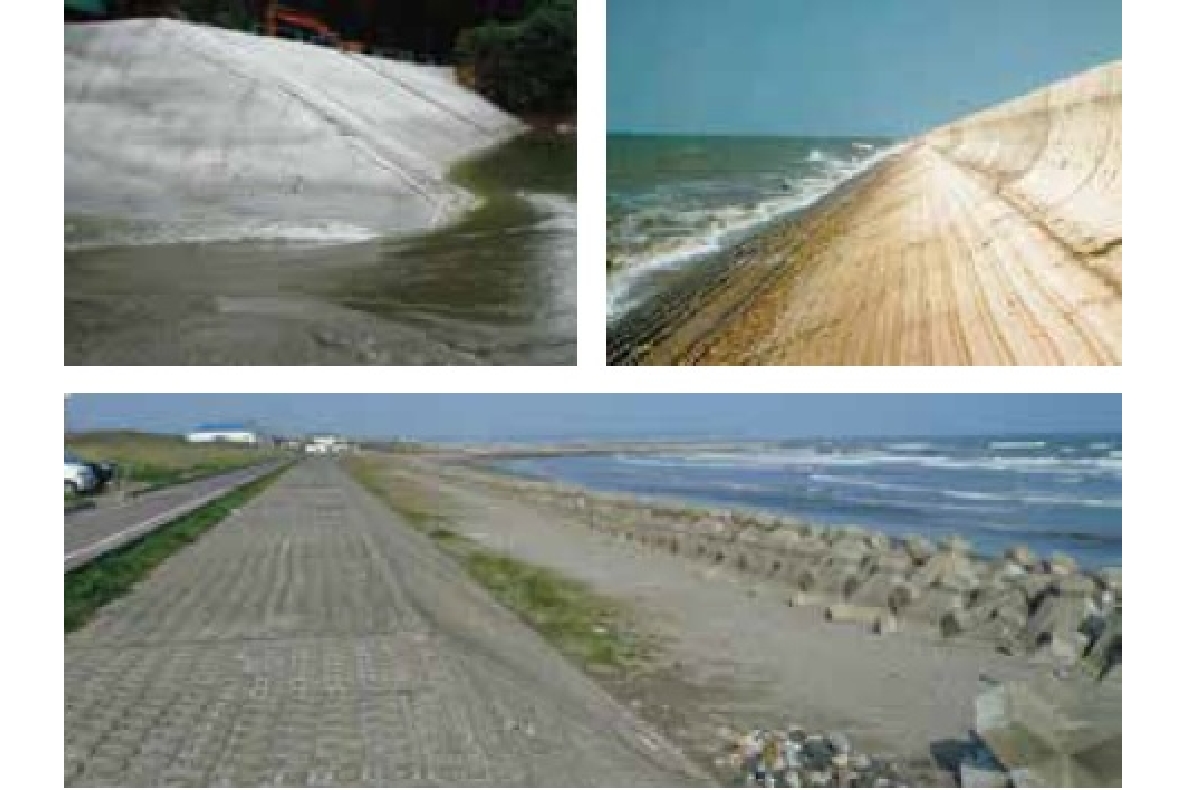
Main components and installation procedures
Laying and fixing mats
Lay the mat on the slope. A single pipe is passed through the upper side of the slope of the mat and secured with chain blocks for support, taking into account shrinkage.
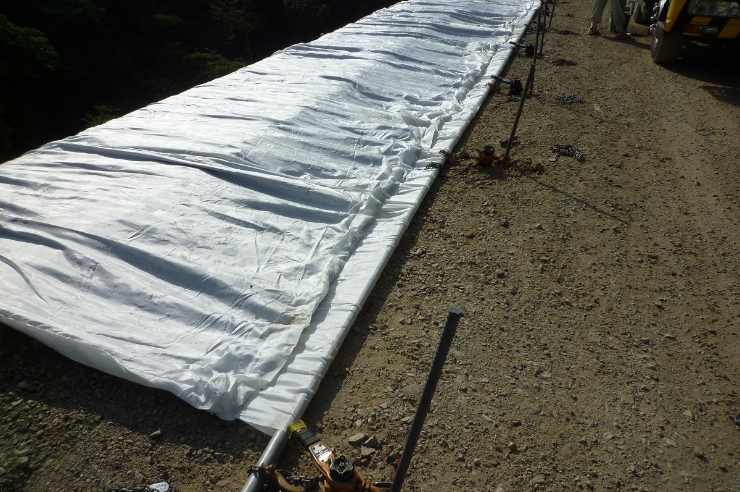
Injection
Insert the injection hose into the inlet of the mat and start from a low position. Inject the mat, taking care to keep the tip of the hose in contact with the interior mortar (concrete) at all times.
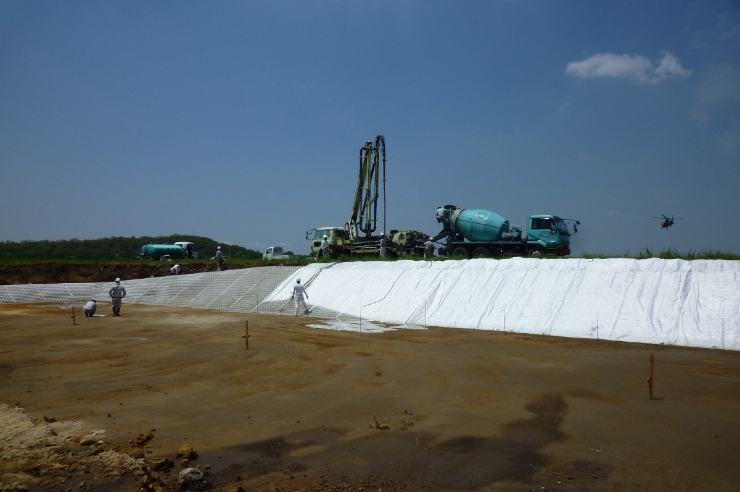
Cleaning
Wash spilled mortar (concrete) and dirt with water.
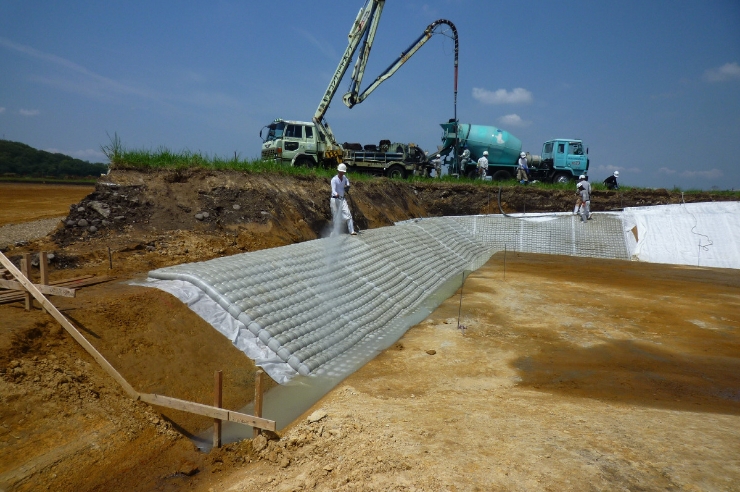
Physical property
TACOM’s standard values
| type | Standard type | Filter type | Mesh type | |||||||
|---|---|---|---|---|---|---|---|---|---|---|
| item | 50H | 100H | 150H | 200H | 300H | 500H | TF65C | TF100C | TF150C | 440 |
| Average thickness (cm) Open space shape (cm) |
5 | 10 | 15 | 20 | 30 | 50 | 6.5 | 10 | 15 | 44×33 |
| Injection Material | mortar | mortar | mortar | concrete | concrete | concrete | mortar | mortar | mortar | mortar |
| Injection volume (m3) | 6.0 | 12.0 | 18.0 | 22.9 | 33.4 | 55.7 | 7.8 | 12.0 | 18.0 | 6.0 |
*The values are averages of measured values, not guaranteed values.
*Per 100 m2 of area to be cast
Standard Formula
| Type Use | Water cement ratio (W/C) | Cement unit weight C( kg/m3 ) | Slump or flow value | remarks |
|---|---|---|---|---|
| Mortar (1:2) | 60~65% (in the case of a single year) | 600 or more | flow value 18±3 sec. |
Flow values are based on P-rotation. |
| Concrete | 55~65% (%) | 370 or more | slump 22±3cm |
Standard type 200H, aggregate max. diameter 15 mm or less, Standard type (300H, 500H) aggregate max. diameter 2 mm or less, σ28=21 N/mm2 or more, fine aggregate ratio 50-60%. |
(1) The above formulations are standard without aggregate. Particular attention should be paid to material separation when constructing underwater.
(2) Before installation, be sure to perform test mixing.
(3) The use of admixture materials is recommended for concrete mixing.
(4) The amount of dewatering is about 15% for mortar and 7% for concrete (20 mm to 25 mm).
Usage
| type | Standard type | Filter type | Mesh type | |||||||
|---|---|---|---|---|---|---|---|---|---|---|
| item | 50H | 100H | 150H | 200H | 300H | 500H | TF65C | TF100C | TF150C | 440 |
| General slope protection | △ Note 1 |
△ Note 1 |
△ Note 1 |
weak Note 1 |
– | – | △ Note 4 |
△ Note 4 |
△ Note 4 |
△ Note 6 |
| Dams and reservoirs | – | △ Note 2 |
△ Note 2 |
△ Note 2 |
– | – | – | △ Note 4 |
△ Note 4 |
– |
| Rivers and waterways | △ Note 2 |
△ Note 2 |
△ Note 2 |
△ Note 2 |
△ Note 2 |
△ Note 2 |
– | △ Note 5 |
△ Note 5 |
– |
| Riverbanks and revetments | – | – | – | △ Note 2 |
△ Note 2 |
△ Note 3 |
– | – | – | – |
Legend 0: Can be laid △: Can be laid depending on conditions
Note 1: No spring water (if there is a spring, a drainage pipe will be installed)
Note 2: No difference in water level (if there is a difference in water level, a drainage pipe will be installed)
Note 3: No water tapping and no difference in water level (if there is a difference in water level, a drainage pipe will be installed)
Note 4: There is a spring
Note 5: When running water is relatively slow
Note 6: Greening possible






